- Design Approaches
- Posted
Fire Safety and Heritage Buildings
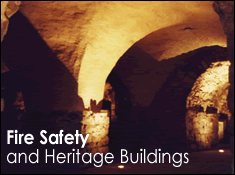
According to English Heritage, the body responsible for the protection of a large number of historic buildings in England, on average two historic buildings burn down each week. While loss of life is not normally associated with these incidents, there is clearly a perception that old buildings represent significant hazards and accordingly the authorities here in Ireland have been reluctant to accord any special consideration to historic buildings when formulating regulations. Historic buildings open to the public are frequently the subject of arson attacks, while buildings are at significantly greater risk during the course of any construction works. Spectacular examples of fires during repair include the fires at York Minster and Windsor Castle.
The regulatory environment
All buildings open to the public are subject to the workings of the Fire Services Act, which, among other things, sets out standards for egress and stability in the event of fire. These standards reflect the current technical guidance given under the building regulations. Places of assembly and entertainment and also apartment buildings are covered by this act, which however, makes no allowance for the special requirements of protected structures, but applies equally to all existing buildings. Thus, requirements to improve fire separation or to provide alternative means of escape may apply to all old buildings.
Under the Planning Act, only work which does not affect the character of a protected structure is exempt from planning control. Anomalies arise when planning permission is not forthcoming for works that may be required by the terms of a fire safety certificate. Several of the typical Georgian buildings on the main Dublin squares exist in a kind of regulatory limbo for this reason.
The solution, as proposed by the Heritage Council and other interested parties, such as the Royal Institute of the Architects of Ireland and the Georgian Society, is for special status to be given to protected structures in the context of technical guidance for the Building Regulations. Such an approach has been adopted in the recently issued revision of Part L of the Technical Guidance Documents, which acknowledges the potentially destructive impact of compliance with new standards on old buildings, and accordingly exempts protected structures from the requirement to comply. A similar approach with regards to fire would allow the special circumstances of historic buildings to be addressed, while maintaining safety standards.
Improving Fire Performance of Older Buildings
Fire Engineering
One of the advantages of working with existing buildings is that issues can sometimes be resolved by demonstration and trial rather than theoretically. This use of a fire engineering approach is acceptable to most fire officers. An extension of this approach is the QDR, or qualitative design review, approach, which allows that increased levels of management may be credited in evaluating the fire performance of a building. As many of the more important historic structures are open to the public, and are therefore equipped with a curatorial staff, this is an important element in establishing and quantifying risk.
Thus, by means of testing, the enclosure of the important cantilevered stone staircases at Dublin City Hall was averted by demonstrating that a fire of a given size, which was lit within the ambulatory of the ground floor, would not fill both staircases with smoke within thirty minutes. In this instance, the building itself assisted in arriving at the solution: the large dome was seen to act as a reservoir for the smoke.
Such fire engineering solutions may be necessary to overcome a literal interpretation of the guidelines under the Building Regulations. The requirement to provide lobbied enclosures to staircases can be particularly intrusive: pressurization of stairs may obviate the need to pressurise, in certain circumstances.
Similarly, it was possible to demonstrate in the crypt of Christ Church Cathedral that adequate levels of lighting were achievable from indirect floor based lights, a design which would normally not be allowable, but following erection of a sample series of fittings and measurement of the resultant light, certification by a competent specialist was provided.
Certain improvements to the performance of buildings in fire are easier to accommodate than others: compartmentation of a roofspace may have little visible impact on a building, yet may significantly reduce the rate of spread of flame or smoke. The more the spread can be inhibited, the more time available for the fire to be identified and controlled.
Active fire detection measures are of the utmost importance in the reduction of the risk of fire. Provision of fire detection and alarm systems to a standard higher than that which would otherwise be required may be possible, attention being given to reducing the impact of wiring on the historic fabric, perhaps even utilising wireless systems.
Doors
In a typical protected structure such as a four storey over basement house in Dublin, there is generally only one stairs, which, if one were to follow literally the requirements of the Technical Guidance documents, should be protected by means of lobbies and fire doors.
All doors have some fire resistance: a typical panelled door could have a resistance of fifteen to twenty minutes: this resistance can be augmented through the application of an intumescent paint or varnish. Indeed, older doors are often of higher quality, being of denser timber than modern doors, and better joined. Doors should fit snugly to prevent the passage of smoke. Smoke, rather than fire, is responsible for most deaths. Door closers should be fitted and as a building management policy doors should be kept closed rather than allow them to be propped open. Doors can be further upgraded by replacing ironmongery and ensuring that new ironmongery is bedded in an intumescent compound.
Floors
Upgrading of floors is more complex: most historic suspended floors have a lath and plaster ceiling which by itself gives a fire resistance of twenty minutes or more. Sometimes there exists within a floor an additional layer of plaster pugging, which augments the floor’s resistance. In California, under the code operating there, there is no requirement to upgrade a lath and plaster ceiling: any improvement in overall fire safety must come from other means.
The most common means of improving fire resistance, the introduction of rockwool suspended on wire, normally means the destruction of pugging. An alternative is to apply an intumescent paper to the underside of the ceiling, obviating the need to open up the floor, but giving resistance from one side only

Site Management
Working on Protected Structures involves a number of specialist skills on the part of the contractor. The CIF has recognised this and has introduced a course which provides specialised training for heritage contractors in procedures and technologies related to historic buildings, with contractors being made aware of the risks inherent in working on older buildings.
This increased risk is recognised and addressed in good site management practise: the use of a hot works permit system where all heat generating activities are subject to special control, and must cease a number of hours before the site closes on any given day, to allow monitoring of the works area.
The provision of a fire fighting system during works should be part of the health and safety statement for any project. Interestingly a recent planning permission for works on a protected structure was conditional upon a detailed method statement on fire prevention during construction being provided in advance of commencement.
Usage and Old Buildings
There is a correlation between the intensity and nature of a proposed new use and the impact on the fabric of an historic building, which might relate to structure or fire or other aspects. For this reason it may be possible to propose that a usage should be curtailed or limited to reflect the capacity of the historic building, say through limiting the number of people or the nature of the activity. Thus in Christ Church the numbers permitted within the cathedral are determined by the available width and number of exits: clearly provision of additional exits is not readily achievable in such circumstances.
Equally it is clear that certain uses are incompatible with the nature and configuration of some historic buildings. A classic illustration would be the prospective use of a single-staircase historic building as a nursing home: necessarily high levels of fire separation, provision of staircases, and so on, would have a major impact on the historic fabric. Such usages should be discouraged.
Conclusions
Authenticity is the characteristic of old buildings that, by definition, is not reproducible. The elements that contribute to an historic building’s authenticity include the completeness of its plan form, the extent of original fabric, the appearance of age, all of which taken together give the building its special character. This character is vulnerable and can be lost as much through fire as through ill-conceived actions taken to limit the impact of fire. Through a careful appreciation of issues of fire safety as well as the significance of old buildings it is possible to protect the public interest and ensure that old buildings can be safe buildings.
Paul Arnold, FRIAI, is an architect who has worked in the conservation field for twenty years.
Projects have included work to St Mary's Cathedral in Limerick, Christ Church Cathedral in Dublin, St. Catherine's Church, Dublin, the Oireachtas Buildings at Leinster House, and as consultant to Dublin Corporation on the restoration of Dublin City Hall and the Halpenny Bridge. In addition, he has a teaching role in the Masters in Urban and Building Conservation course at the School of Architecture, U.C.D.
- Fire Safety
- Heritage Buildings
- protection
- arson attacks
- Fire Services Act
- protected structure
- Heritage Council
Related items
-
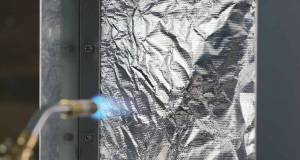 Partel launches new Euroclass A2 fire-rated vapour control system
Partel launches new Euroclass A2 fire-rated vapour control system -
 Partel launches new fire-rated breather membrane
Partel launches new fire-rated breather membrane -
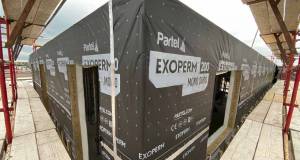 Partel fire-rated membrane contributes to new hospital extensions
Partel fire-rated membrane contributes to new hospital extensions -
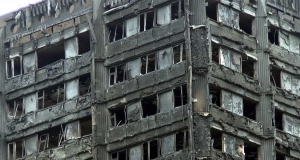 Chair of post-Grenfell fire review “shocked” by construction culture
Chair of post-Grenfell fire review “shocked” by construction culture -
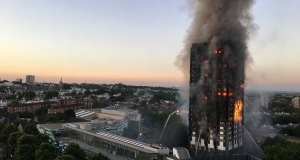 Secrecy of fire tests undermines public safety, Grenfell Enquiry hears
Secrecy of fire tests undermines public safety, Grenfell Enquiry hears -
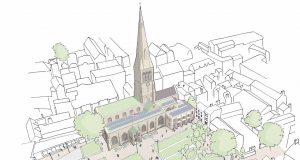 Leicester cathedral to get passive extension
Leicester cathedral to get passive extension -
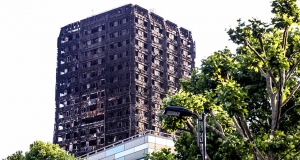 Grenfell Tower - How did it happen?
Grenfell Tower - How did it happen? -
 Stylish low energy house squeezed into South Dublin garden
Stylish low energy house squeezed into South Dublin garden -
EPA HQ
-
Why Knott?

